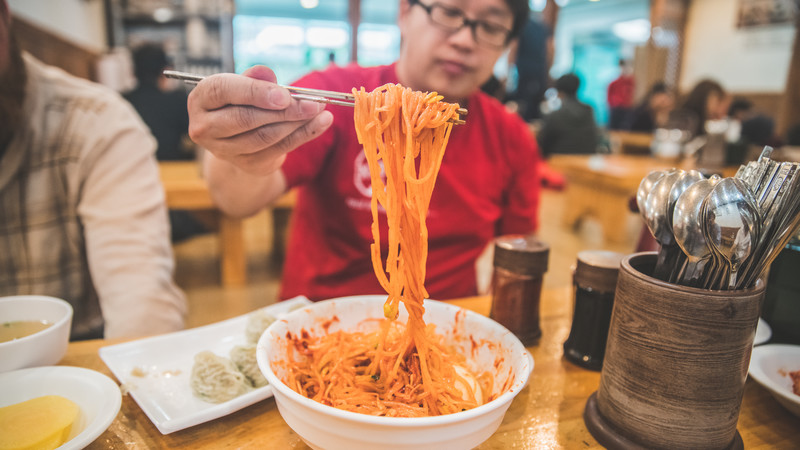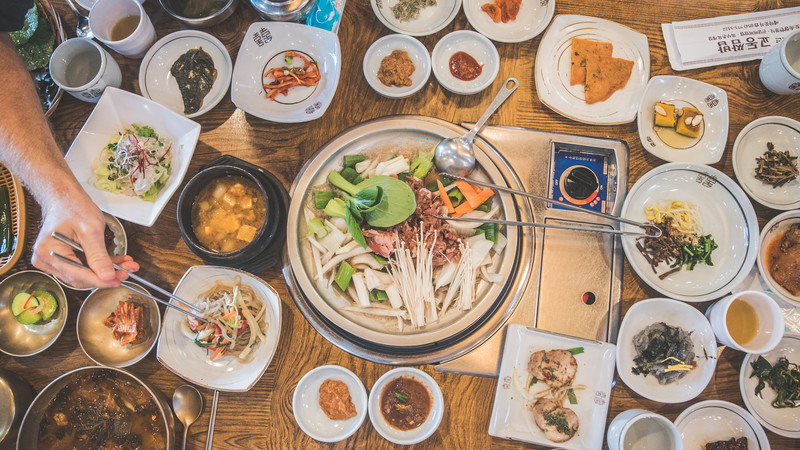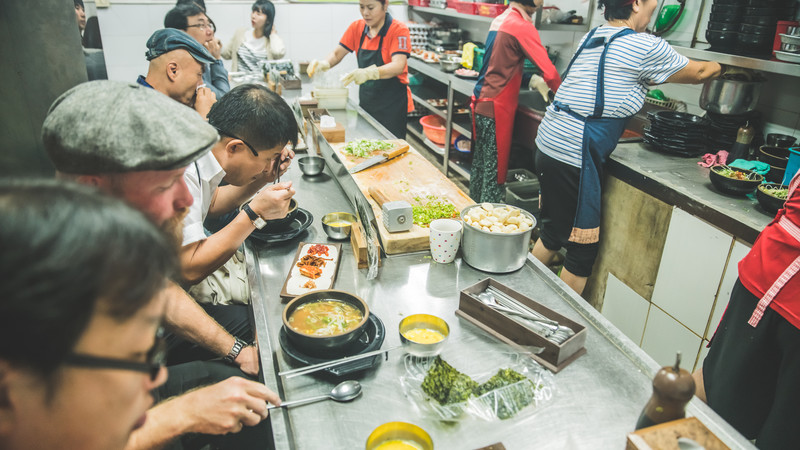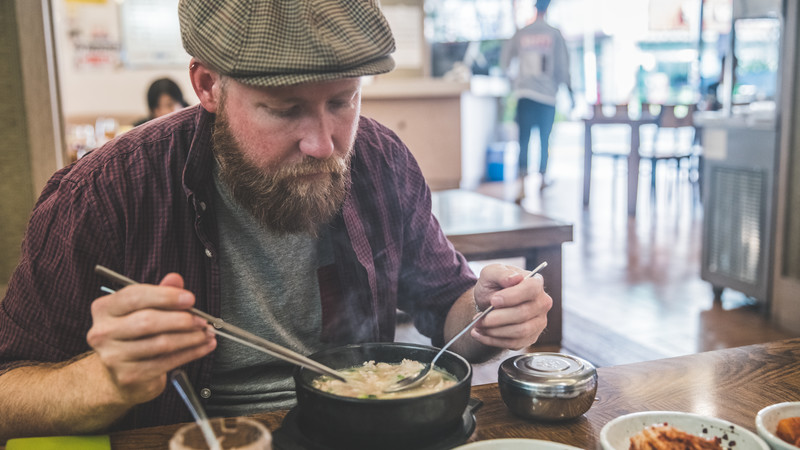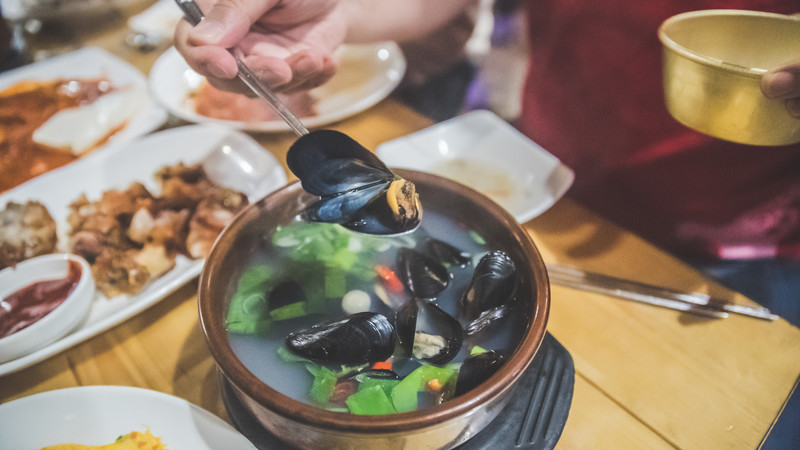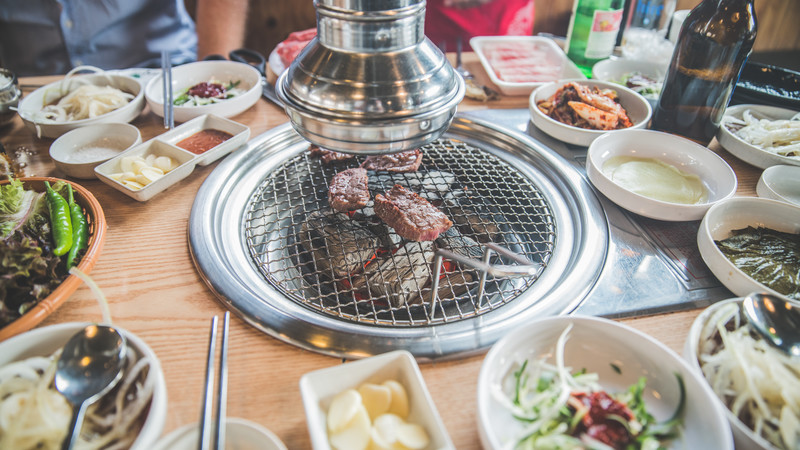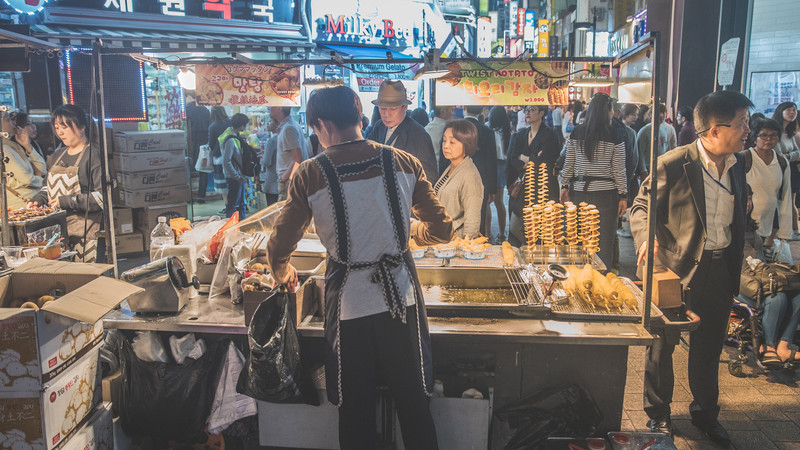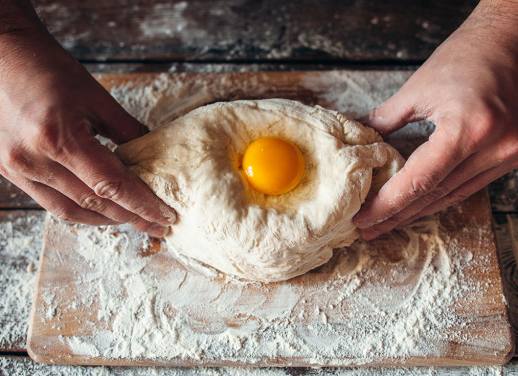Korean cuisine has evolved far beyond kimchi, and that is one reason why it has created so much buzz around the world.
Michelin-starred chefs like Eric Ripert and Jean-George Vongerichten have been incorporating Korean techniques and ingredients into their menus. However – as a local food blogger – I feel that Korean cuisine doesn’t fare best in white-tablecloth atmospheres. Instead, it is more about sitting around a charcoal grill in the center of your table with your friends, having a drink and jovially talking about this, that, and whatever.
The core values of Korean cuisine are that food is medicine, food should be balanced and that dining should be social and shared. And the best way to experience it? On our 8-day food trip, of course!
Here are some must-try dishes and a few dining tips that will let you get a taste of real Korean cuisine (why is, in my opinion, the world’s undisputed best):
Hanjeongsik: a table full of food
A restaurant is not judged on just one dish; if they do not have good banchan (small dishes of food like kimchi) they will quickly go out of business.
The banchan are just as important as the meats, fish or other dishes. A good Korean restaurant is also judged on its quality of rice. If they use mushy, old rice – which is considered the most important part of the meal – many feel they must not care about their food.
Koreans would consider a good meal to be one with so many side dishes that it looks like the table leg will break under the weight of all those dishes.
You should have fermented kimchi, cured seafood, quick-blanched veggies mixed with sesame oil, bubbling soybean and tofu soup, savory onion or veggie pancakes, seasoned and grilled meats, sauces, fresh leaves, cured seafood, grilled fish and much more.
Samgyetang: chicken and ginseng soup
Samgyetang or Korean chicken and ginseng soup will rev up your soul and appetite for its familiar yet unique taste. It’s like if a French Poule au Pot traveled to Asia and learned a new philosophy and approach to food.
It is a young chicken stuffed with glutinous sweet rice, ginseng, chestnuts, garlic, jujube, and herbs and then boiled in broth until tender. In olden times, Koreans would eat this dish on the three hottest days of summer for it would revitalize the body so they could work in the fields.
There is a version made with an exotic black chicken that has black flesh and black bones (Ogolgye 오골게) which (some people claim) will rejuvenate them after sickness or a strenuous period of time.
The crowd favorite for this dish seems to be Tosokchun but I prefer Goryeo Samgyetang – both in Seoul. I also like Songchon Okdak in Jeonju.
Korean seafood: fresh raw fish wraps, live octopus and bubbling stews
No, Korean raw fish is not sashimi or sushi; it’s hwae (회). Koreans want food as fresh as possible. They want live fish killed immediately and then sliced before their very eyes.
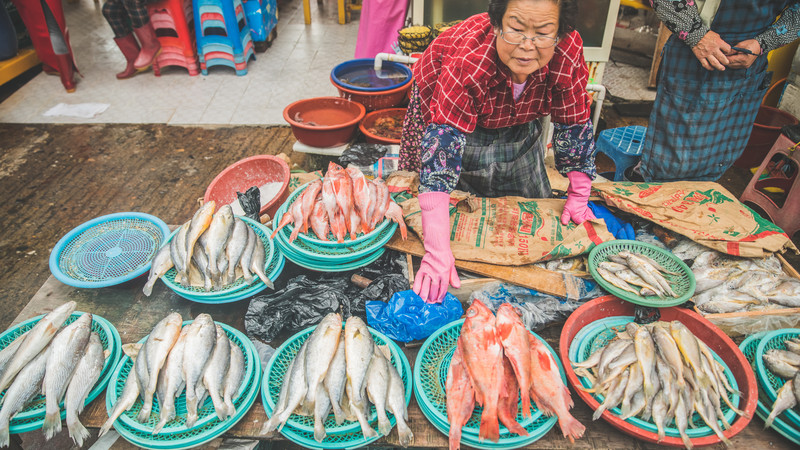 This fish has a very clean, chewy and fatty flavor that is best wrapped in a fresh leaf and topped with fermented bean paste sauce (ssamjang), a sliver of garlic, a little chili and then wrapped and eaten. The bones of the fish will be used to make a spicy fish stew.
This fish has a very clean, chewy and fatty flavor that is best wrapped in a fresh leaf and topped with fermented bean paste sauce (ssamjang), a sliver of garlic, a little chili and then wrapped and eaten. The bones of the fish will be used to make a spicy fish stew.
You can have seafood accompaniments such as raw sea squirt (monggae), grilled abalone, steamed king crab and squirming live octopus. There are many restaurants for this but I would recommend you pick out your own seafood from a fish market and then eat it at restaurant in the market. The best places to do this would be at the Jagalchi Market in Busan and Noryangjin Market in Seoul.
LOVE KOREAN FOOD? YOU’LL LOVE INTREPID’S 8-DAY FOOD TRIP IN SOUTH KOREA
Korean BBQ
Duh. Of course you have to have Korean BBQ while you are in Korea.
It is convenient, social and fun when you have a charcoal grill in the center of your table, many side dishes, leaves, salads, dips, assorted meats and scissors and tongs to cut and serve. Its mesmerizing.
For pork BBQ, I like to eat around BBQ alley by Jongno 3ga exit 4 at Jeju Abang. For beef, I like to go to Majangdong Beef Market or to Han6gam for a high-end BBQ experience.
SEE MORE: A PHOTO ESSAY OF SOUTH KOREA’S INCREDIBLE FOOD SCENE
Korean street food and delivery
If you come to Korea and are hungry, then you are doing it wrong. There are many food stalls in most busy areas in Korea. You can get 30cm ice cream in Hongdae, crisp mung bean pancakes at Gwangjang Market, giant dumplings and hotteok at Namdaemun Market and fried rice cake noodles at Tong Market.
There are a number of delivery services as well that will deliver to your hotel or to where you are at a park. Koreans are quite creative with their street food and you can even get steak in a cup (with beer) at Nuclear Steak.
There are so many things to eat and drink in Korea that you would need at least a month to try the many different dishes.
And after the Korean food, you might want to try Korea’s take on western food like craft beer, pizza, hamburgers, steaks and fine dining. If you love food and adventure, this is a culinary destination that’s not to be missed.
Ready to dive into one of the tastiest cuisines around? Check out Intrepid’s 8-day South Korea Real Food Adventure trip.
—
All images c/o Intrepid Travel. Dan’s bio image c/o Marco Arguello.

